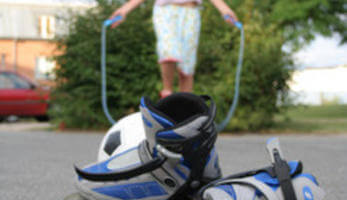Implementing environmental zones
Thematic areas
Demand & urban space management
Summary
By reducing the impact of traffic and using public road space for alternative purposes, the health and quality of life of residents, employees and visitors can be improved.
Implementing sustainable mobility
Odense regards the creation of environmental zones as part of a city-wide policy for improving the environment and enhancing the quality of life of the citizens who live and work there. This measure targeted both a city-centre zone and two different types of residential zones.
Behind the measure is Odense City Council’s commitment to and success with road safety, safe routes to school and cycling promotion. In addition, a market survey in 2003 demonstrated that 97 percent of Odense’s population were willing to accept a speed limit as low as 30 km/h in residential areas.
Environmental zones have traditionally been established through the use of special regulations and restrictions, often resulting in dramatic changes to the physical fabric of city centres (pedestrian streets, cycle lanes, access restrictions and parking restrictions). A survey carried out in Odense in 2000 concluded that a better pedestrian connection was needed between the pedestrian street system and the railway station and that the completion of a cycle ring road would increase the share of cycling and walking in the city centre.
The aim of this measure was therefore to:
- establish environmental zones for Odense city centre within the inner ring road and for two selected housing areas in Odense;
- demonstrate and document that environmental zones can improve the quality of health and life for both residents, workers and visitors to Odense city centre as well as for residents and visitors to housing areas;
- increase quality of life for city-centre residents and users;
- reduce the impact of motor vehicles on residential environments by introducing measures to limit/restrict/change vehicle access, speed, road space and noise;
- increase traffic safety and feelings of security in residential areas;
- increase the use of public road space for social interactions; and
- implement marketing campaigns to promote environmental zones.
Progress
Environmental zones were established for both target housing areas. Working groups held several meetings and plans were presented to residents of both areas for commenting. The final plans were approved by the Road Directorate. Changes were carried out during the summer of 2007 and in both areas the changes were celebrated with events that attracted many local participants.
In the city centre, four electronic cycle scanners were installed to give cyclists priority at junctions on cycle routes into the city. Two interactive information points were also installed in the city centre targeted at cyclists and pedestrians and providing details of cycle routes, pedestrian areas, cycle shops and repair services. Count-down timers for pedestrians were installed, giving pedestrians priority at three traffic light crossings between the railway station and the city centre.
Outcomes
There was a high level of citizens’ involvement in the Living Streets projects.
- The average speed dropped by 12 percent and 22 percent respectively in the two residential areas.
- The volume of through traffic fell by 35 percent.
- Based on a survey of 150 residents from the two areas before and after implementation, 61 percent of residents considered that traffic speed had dropped.
- The proportion of residents who considered it safe to cross the road as a pedestrian or cyclist increased from 24 percent to 61 percent.
- The share of cycling increased by 62 percent in one of the pilot areas and remained constant in the other, where the modal share of cycling was already higher.








